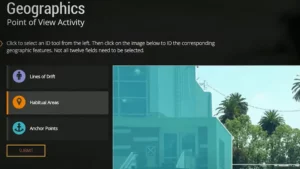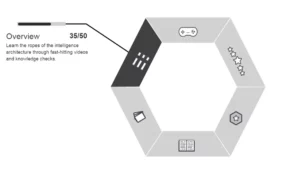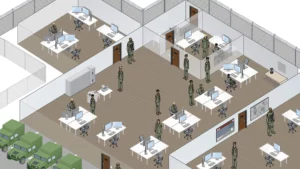Background
Captivating Virtual Instruction for Training (CVIT) is designed to future-proof distributed learning (dL) through the delivery of course material that is not only informative and educational but also engaging and stimulating for participants. The project was jointly-funded through DEVCOM and sponsors including the Intelligence Center of Excellence (ICOE), Maneuver Center of Excellence (MCOE) and Combined Arms Center (CAC).
Objectives
CVIT is a comprehensive digital framework for educators and courseware developers to use when designing, producing and deploying remote course material. It aligns successful instructional techniques used by live classroom instructors (humor, motivation, tone, pace) with core enabling technologies (virtual humans, casual games, augmented reality, intelligent tutors and narrative-driven experiences). The objective is to reduce the time and resources required to produce compelling online material.
Results
CVIT has been in use at the Maneuver Center of Excellence (MCOE) at Ft Moore, Georgia (formerly Ft. Benning), in support of the Army’s situational awareness training program since 2017. The platform was also used at Ft. Huachuca as part of the Army’s Intelligence Architecture Online Course (IAOC), and at the Army Management Staff College (AMSC), Fort Leavenworth for the Supervisor Development Course – Refresher (SDC-R). To date, over 10,000 Soldiers and Civilians have been trained using CVIT technologies. CVIT SDC-R uses adaptive and immersive training techniques to reduce training time to 5-7 hours, versus the 40 hours previously required (a savings of over 97,000 hours in the first year alone).
Next Steps
ICT is seeking additional course material to digitize across the Army and Department of Defense (DoD). If interested
please Contact Us.
Published academic research papers are available here.


